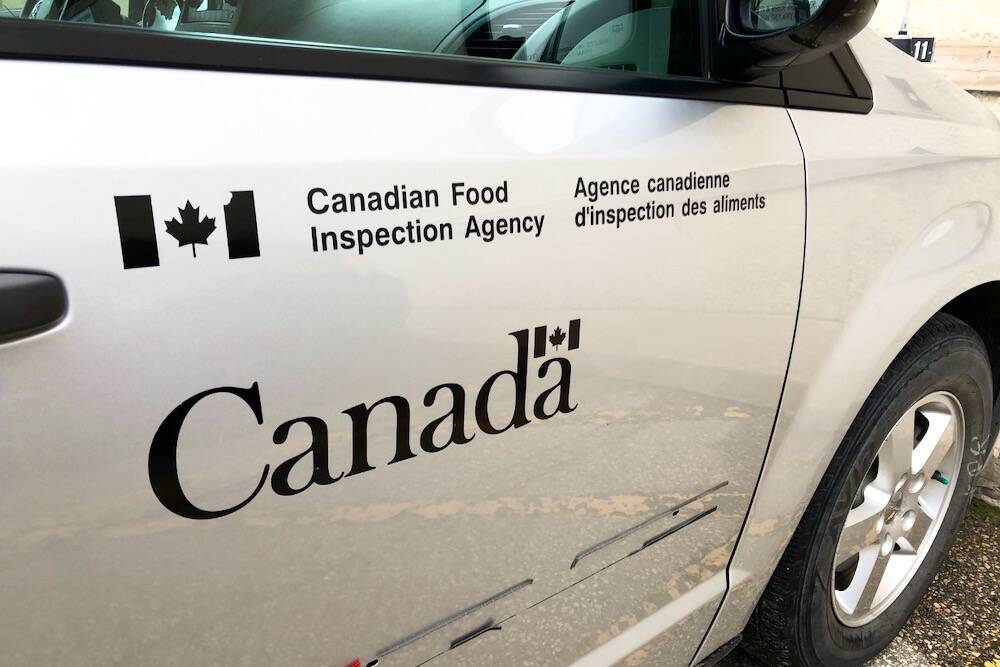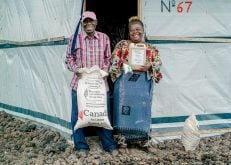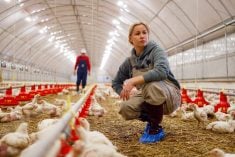Alberta producers are asking for a meeting with their agriculture minister as the clock ticks down to the signing of an agreement that will direct farm programs for the next five years.
Federal and provincial ministers meet in less than a month, but farm leaders in Alberta are wondering what happened to discussions with them, the people that the programs will affect.
“What strikes me is the enormity of the programs and the importance of the programs that there should have been a lot more discussion of the programs,” said Rich Smith, executive director of Alberta Beef Producers.
Read Also

B.C. ostriches culled, CFIA confirms
Ostriches on an embattled Edgewood, B.C. farm have been culled after a prolonged legal battle, the Canadian Food Inspection Agency has confirmed.
“It should have been discussed at considerable length, but it hasn’t.”
Instead, farm groups across the country are left wondering what farm programs will look like when the five year Growing Forward 2 program is revealed in Whitehorse in mid-September.
Humphrey Banack, past-president of Wild Rose Agricultural Producers, said the secrecy around the changes from both the federal and provincial governments prompted his organization, with co-signatures from 12 other provincial farm groups, to ask Alberta agriculture minister Verlyn Olson for a meeting about the changes.
“We would like some transparency of what we have to look forward to,” said Banack of Round Hill, Alta.
“We don’t have to get into the bare bones details, but some kind of consultation and information sharing, that’s what this letter is asking for. We would like some clarity where our provincial minister is looking to go.”
Banack said the combination of secrecy from both federal and provincial agriculture ministers and talk of more than $2 billion of cuts over the next five years to the program, especially the business risk management programs, has producers worried.
“We have no idea what the BRM programs are going to look like,” said Banack.
Initial discussions talked about reducing AgriStability payment triggers to 50 percent from 85 percent of a producers’ historic margin but has since been raised to 70 percent margin coverage.
There is also talk of putting caps on margins and higher premiums for producers.
“We see such a wide range of ideas going in, we have no idea where this is going to land. We’re living in a void here. That’s the feeling,” he said.
“It has a huge amount of impact on our operations.… We just want some idea from our ag minister of what exactly is out there.”
Smith agreed: “We don’t have a good sense of what government thinks.”
The Alberta government held three strictly controlled discussions at the end of July about changes to the Growing Forward program, but with a wide range of suggestions from participants, no one is clear what suggestions were adopted or rejected.
Banack doesn’t know if it’s too late to influence government decisions already made.
“Whether we can affect change in the Growing Forward 2 programs is debatable, that’s highly debatable.”
With Ontario, Quebec and British Columbia governments indicating they will not sign onto the new program, Banack wonders where that leaves other provinces.
“Does the agreement move ahead for the provinces that do? Does it fall apart? Those are all questions we don’t have answers for,” he said.
“If three provinces sign on and seven don’t, is it still an agreement between three?”
Alberta Canola Producers Commission policy analyst Karla Bergstrom said his organization also signed the WRAP letter.
“We felt there was a lack of consultation with the producer groups,” said Bergstrom.
Provincial agriculture minister Verlyn Olson was unavailable for comment today.














